Home > Auctions > 21 - 25 February 2023
Ancient Art, Antiquities, Natural History & Coins
Auction Highlights:
Acquired on the UK antiques market between 1974-1985.
Albert Ward collection, Essex, UK.
See Evans, J., English Posies and Posy Rings, London, 1931, for many examples.
Acquired on the UK antiques market between 1974-1985.
Albert Ward collection, Essex, UK.
See Evans, J., English Posies and Posy Rings, London, 1931, for many examples.
Acquired on the UK antiques market between 1974-1985.
Albert Ward collection, Essex, UK.
See Evans, J., English Posies and Posy Rings, London, 1931, p.16, for this inscription.
Found Romney Marsh area, Kent, UK.
Property of a Kent gentleman.
Cf. The British Museum, museum number 'posy ring AF.1315', for a very similar ring with this inscription and seemingly the same maker's mark; it is noted that this maker's mark has not been identified in any standard reference works; believed active c.1755-1764.
Acquired on the UK antiques market between 1974-1985.
Albert Ward collection, Essex, UK.
See Evans, J., English Posies and Posy Rings, London, 1931, p.43, for this inscription.
Acquired in the 1980s.
Property of a London gentleman.
This lot has been checked against the Interpol Database of stolen works of art and is accompanied by search certificate no.11663-197588.
Signet rings were jewellery items serving practical functions, and were pressed into hot wax to seal letters and packets. Personal seals or secreta acted as a legal safeguard, since they were used to witness wills, loans, commercial, personal and other documents. Such rings were often engraved with a coat of arms, initials, merchant's mark or some other personal symbol. Painted portraits of this period portray the wearer with the signet ring on the thumb or forefinger, allowing for practical use.
Acquired in the 1980s.
Property of a London gentleman.
This lot has been checked against the Interpol Database of stolen works of art and is accompanied by search certificate no.11664-197587.
Cf. The Metropolitan Museum, New York, accession number 197587, for a very similar ring dated c.1600 A.D.; cf. The V&A Museum, accession numbers M.272-1962, M.378-1927 and M.273-1962, for broadly comparable examples.
Signet rings were jewellery items serving practical functions, and were pressed into hot wax to seal letters and packets. Personal seals or secreta acted as a legal safeguard, since they were used to witness wills, loans, commercial, personal and other documents. Such rings were often engraved with a coat of arms, initials, merchant's mark or some other personal symbol. Painted portraits of this period portray the wearer with the signet ring on the thumb or forefinger, allowing for practical use. Skulls on rings were potent symbols of mortality. 'Memento mori' or 'remember that you must die' imagery served as a reminder to the Christian of the need to keep their soul in good order for the final judgment.
Acquired in the late 1990s-2000.
Property of an East London gentleman.
Cf. The British Museum, museum number AF.1605 'mourning-ring', for similar dated 1727.
Acquired from Berganza, Hatton Garden, London, 2016.
Property of an East Sussex collector.
Accompanied by a copy of the Berganza invoice.
This lot has been checked against the Interpol Database of stolen works of art and is accompanied by search certificate no.11665-197583.
Cf. The V&A Museum, London, accession number 528-1868, for a ring of similar type.
Likely a ring of the memento mori genre. The V & A Museum states that during the 'Renaissance, the ring developed from the simple forms of the medieval period into a miniature work of art, combining the skills of the chaser, engraver and enameller as well as the stone cutter.'
Acquired from Platt Boutique Jewelry, Inc., West Hollywood, California, USA, 2016.
Property of an East Sussex collector.
Accompanied by a copy of the Platt Boutique Jewelry invoice.
This lot has been checked against the Interpol Database of stolen works of art and is accompanied by search certificate no.11668-197586.
See discussion in Jones, W., Finger-ring Lore, London, 1877, p.433.
'Poison rings' became popular in Europe during the 16th century, and Lucrezia Borgia is popularly believed to have used one. The compartment within the bezel was used to conceal poison, a lock of hair or other substances.
Valued by Bentley & Skinner, Piccadilly, London W1, 2016.
Property of an East Sussex collector.
Accompanied by a copy of the Bentley & Skinner insurance valuation.
This lot has been checked against the Interpol Database of stolen works of art and is accompanied by search certificate no.11669-197584.
Cf. The V&A Museum, accession number 1112-1864, for a similar ring; cf. Oman, C., British Rings 800-1914, London, 1974, pl. 3, for similar rings; cf. Chadour, A.B., Rings. The Alice and Louis Koch Collection, Vol.1, Leeds, 1994, items 757-758, for similar; cf. Oman, C., British Rings 800-1914, London, 1974, pl. III, for a similar ring.
The V & A Museum explains that during the '...Renaissance, the ring developed from the simple forms of the medieval period into a miniature work of art, combining the skills of the chaser, engraver and enameller as well as the stone cutter.
Acquired from Les Enluminures Ltd, Illinois, USA, 2016.
Property of an East Sussex collector.
Accompanied by a Les Enluminures certificate of authenticity.
Accompanied by a copy of the Les Enluminures invoice.
This lot has been checked against the Interpol Database of stolen works of art and is accompanied by search certificate no.11670-197580.
Cf. The V&A museum, accession number 731-1902, for a similar ring dated 1550-1600 A.D.; cf. Scarisbrick, D. et al., Toward an Art History of Medieval Rings: A private Collection, pp.204-205, for a similar ring; cf. The British Museum, museum number 1872,0604.425, 'Finger-ring; gold; on each shoulder a band of leaf shapes reserved in the metal on a ground of black enamel; pyramidal bezel, also enamelled in black, supported by four large claws, and containing a crystal', for a similar ring; cf. Chadour, A.B., Rings. The Alice and Louis Koch Collection, Vol. 1, Leeds, 1994, item 689, for similar.
Rubies were a potent symbol of status and social distinction in later medieval Europe, frequently adorning royal crowns. In the Renaissance, however, they conveyed a personal, more intimate message, their red colour, like the rose, emblematic of love. The intensity of the red colour was often enhanced with a foil lining to the setting and were popular as betrothal and wedding rings. It is believed that rubies symbolised the virtues of marriage and eternal matrimonial love. Such rings held an international appeal, making attribution to specific workshops or countries very difficult. The V & A Museum explains that 'Renaissance, the ring developed from the simple forms of the medieval period into a miniature work of art, combining the skills of the chaser, engraver and enameller as well as the stone cutter.'
205 - 216 of 2116 LOTS


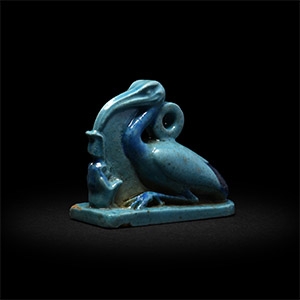



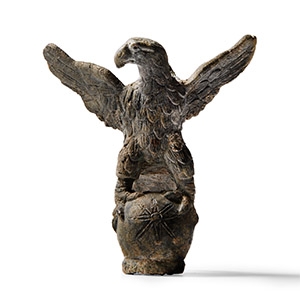
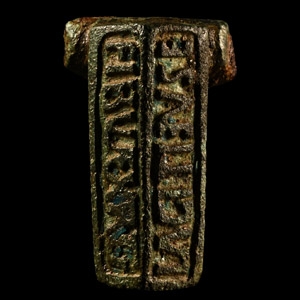

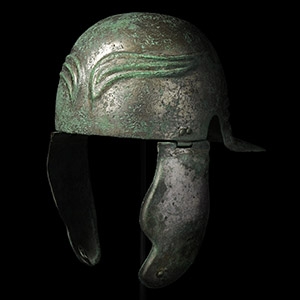
.jpg)
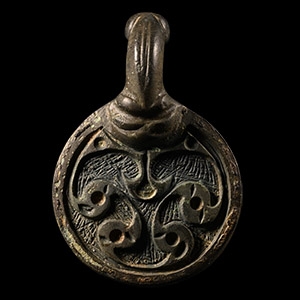
.jpg)
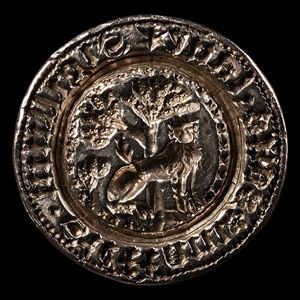
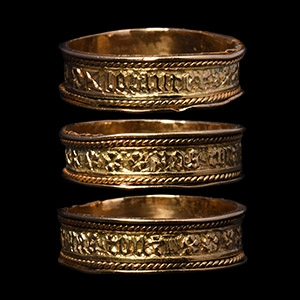


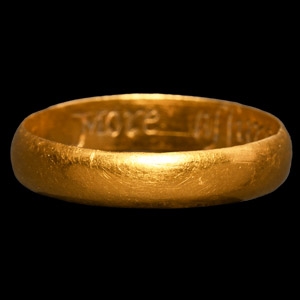

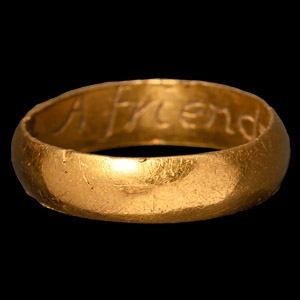
.jpg)
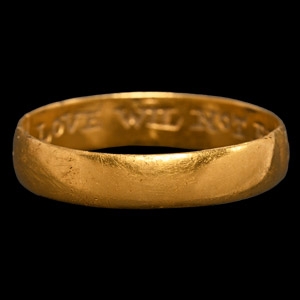

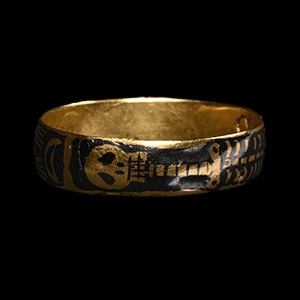
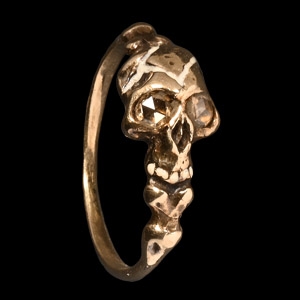
.jpg)
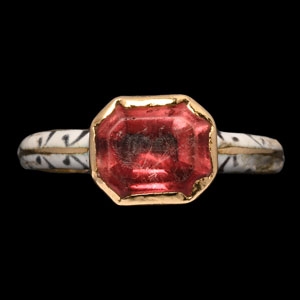
.jpg)



